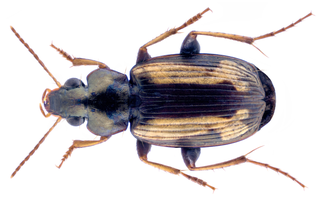
Pope Lucius I was the bishop of Rome from 25 June 253 to his death on 5 March 254. He was banished soon after his consecration, but gained permission to return. He was mistakenly classified as a martyr in the persecution by Emperor Valerian, which did not begin until after Lucius' death.

Sarah Kirsch was a German poet.

Kirschwasser, or just Kirsch is a clear, colourless brandy from Germany, Switzerland and France, traditionally made from double distillation of morello cherries, a dark-coloured cultivar of the sour cherry. It is now also made from other kinds of cherries. The cherries are fermented completely, including their stones. Unlike cherry liqueurs and cherry brandies, Kirschwasser is not sweet. It is sometimes distilled from fermented cherry juice.

The eastern rosella is a rosella native to southeastern Australia, including Tasmania.

The genus Sorex includes many of the common shrews of Eurasia and North America, and contains at least 142 known species and subspecies. Members of this genus, known as long-tailed shrews, are the only members of the tribe Soricini of the subfamily Soricinae. They have 32 teeth.

Dryophytes eximius, commonly known as the mountain tree frog, is a species of frog in the family Hylidae endemic to Mexico. Its natural habitats are mesquite grasslands, scrub forests, and pine-oak forests. It is a widely distributed species that faces no major threats.

The green-tailed bristlebill is a species of songbird in the bulbul family, Pycnonotidae. It is found in West Africa from Sierra Leone to Ghana. Its natural habitat is tropical moist lowland forests. It is threatened by habitat loss. The green-tailed bristlebill was originally described in the genus Trichophorus. Formerly, some authorities considered the yellow-lored bristlebill as conspecific with the green-tailed bristlebill.

Kirsch-lès-Sierck is a commune in the Moselle department in Grand Est in north-eastern France.

Irving Kirsch is an American psychologist and academic. He is the Associate Director of the Program in Placebo Studies and a lecturer in medicine at the Harvard Medical School and Beth Israel Deaconess Medical Center. He is also professor emeritus of psychology at the Universities of Hull and Plymouth in the United Kingdom, and the University of Connecticut in the United States. Kirsch is a leading researcher within the field of placebo studies who is noted for his work on placebo effects, antidepressants, expectancy, and hypnosis. He is the originator of response expectancy theory, and his analyses of clinical trials of antidepressants have influenced official treatment guidelines in the United Kingdom. He is the author of the 2009 book The Emperor's New Drugs, which argued most antidepressant medication is effective primarily due to placebo effects.

Anelosimus eximius is a species of social spider in the genus Anelosimus, native to the Lesser Antilles and the area from Panama to Argentina. Colonies can comprise several thousand individuals.
Hylaeogena is a genus of beetles in the family Buprestidae, containing the following species:

Tetragonoderus is a genus of beetles in the family Carabidae.
Copelatus externus is a species of diving beetle. It is part of the genus Copelatus of the subfamily Copelatinae in the family Dytiscidae. It was described by Theodor Franz Wilhelm Kirsch in 1873.
Copelatus substriatus is a species of diving beetle. It is part of the subfamily Copelatinae in the family Dytiscidae. It was described by Theodor Franz Wilhelm Kirsch in 1873.

Sphenophorus is a genus of weevils, often known as billbugs, in the family Curculionidae, and tribe Sphenophorini. Eleven species of billbugs infest managed turfgrass in North America.

Neurankylus is an extinct genus of turtles in the family Baenidae that lived between 112 and 61 million years ago in Canada and the United States. It was originally placed within the monotypic family Neurankylidae, but it has since been placed in the Neurankylinae, alongside Trinitichelys. The type species, Neurankylus eximius, was described by Lawrence Lambe in 1902. The species N. lithographicus was discovered in the Milk River Formation (Canada), alongside the holotype of the pachycephalosaurid dinosaur Acrotholus audeti.

Sutorius eximius, commonly known as the lilac-brown bolete, is a species of fungus in the family Boletaceae. This bolete produces fruit bodies that are dark purple to chocolate brown in color with a smooth cap, a finely scaly stipe, and a reddish-brown spore print. The tiny pores on the cap underside are chocolate to violet brown. It is widely distributed, having been recorded on North America, South America, and Asia, where it grows in a mycorrhizal relationship with both coniferous and deciduous trees.

Thomas Lee Kirsch II is an American attorney and jurist who has served as a judge of the United States Court of Appeals for the Seventh Circuit since December 2020. He was previously the United States attorney for the Northern District of Indiana from October 2017 to December 2020.

Artematopodidae is a family of soft-bodied plant beetles in the superfamily Elateroidea. They are mostly found in understory forest foliage. The life history of the group is obscure, larvae of the genera Eurypogon and Macropogon likely feed on moss, while the larvae of Artematopus have been fed insect remains. The oldest fossils of the family date to the Middle Jurassic.

Cypherotylus is a genus of pleasing fungus beetles in the family Erotylidae. There are over 30 described species in Cypherotylus. It frequently appears in the literature under the name "Gibbifer", but this name is permanently unavailable under ICZN Article 11.4, as are all of Voet's names.
















